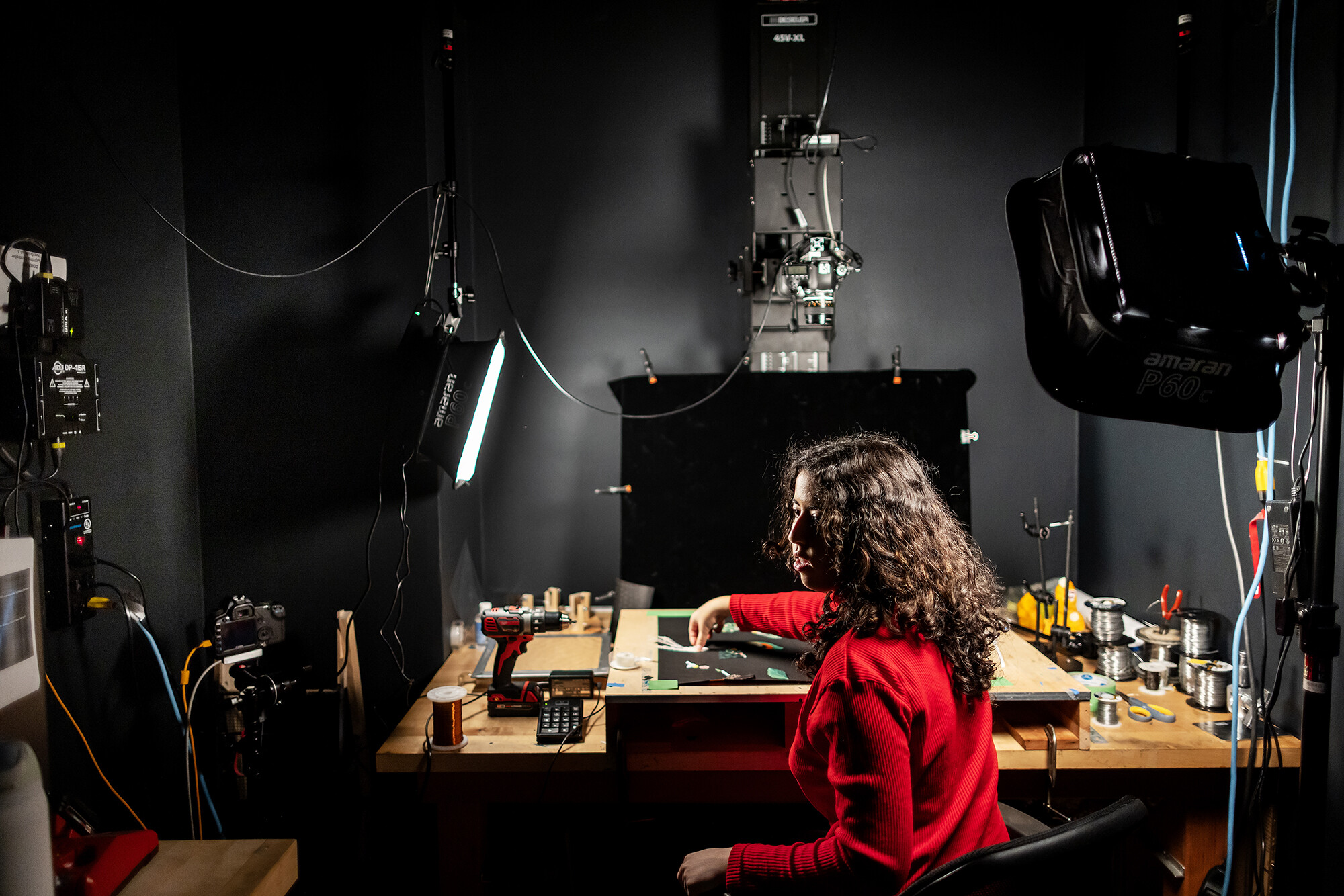
(From left) Doctoral student Hannah Yamagata, research assistant professor Kushol Gupta, and postdoctoral fellow Marshall Padilla holding 3D-printed models of nanoparticles.
(Image: Bella Ciervo)

Hundreds of undergraduates take classes in the fine arts each semester, among them painting and drawing, ceramics and sculpture, printmaking and animation, photography and videography. The courses, through the School of Arts & Sciences and the Stuart Weitzman School of Design, give students the opportunity to immerse themselves in an art form in a collaborative way.
“We see ourselves as a hub for creative making and thought on campus,” says Matt Neff, director of undergraduate fine arts and design. “Students are coming because of their interests and curiosity.”
Enrollment in undergraduate fine arts courses has spiked in the past couple of years—especially in materials-based courses like painting, drawing, clay, sculpture—since students returned to campus after the pandemic, Neff says. “I think people were itching to use their hands.”
Fine arts and design are separate undergraduate majors, but intertwined, sharing elective courses. Faculty, artists themselves, are in the Weitzman School of Design, but the undergraduate courses and degree are through the College of Arts & Sciences. Together nearly 800 undergrads take those courses each semester, and most are non-majors, Neff says.
“We don’t have prerequisites; our intro-level courses are for everyone,” he says. “If you’ve never drawn anything before, we welcome that. You won’t be alone.”
Courses include traditional drawing, painting, sculpture, clay, printmaking, photography, video, and even a course about creating murals. Darkroom photography, eliminated by many universities, is “booming right now,” Neff says. Several classes are offered on animation, including hand-drawn animation, computer animation, and 3D animation. There are experimental studios, including a projection class.

Neff teaches the course Contemporary Art Studio, with trips to visit artists and galleries and museums, as well as making art projects. “Our teaching in fine arts is really responsive. We’re constantly tweaking our courses and curriculum,” he says.
If enrolled in a fine arts or design course, students have access to facilities, like the Charles Addams Fine Arts Hall, 24 hours a day. Photo and video and other equipment are available to borrow. “I’d almost like to take the ‘fine’ out and just make it arts for everyone in a sense,” Neff says. Many students “decide to take one elective here, and then they kind of get hooked.”
The work is collaborative, often in teams. “They'll bring anything and everything into the studios in terms of content,” Neff says. “It’s about helping them figure out ways to visualize or manifest what they are thinking about.”

The undergraduate fine arts program is interdisciplinary, mirroring the Master in Fine Arts graduate degree. “A student could take a drawing class and a video class and an animation class at the same time. And they don’t have to commit to being any one of those things,” Neff says. “Penn undergrads often have other majors or minors, so this integrated knowledge is really core to the fine arts program.”
Undergrad fine arts majors have their own studios on the fifth floor of the Duhring Building, next to Fisher Fine Arts. Once a semester, they have an open studio and hundreds of people come through. There is also a final critique with faculty at the end of each semester.
“Community is embedded in art making. It just is,” Neff says. “I think especially now, it feels more important than ever that if we’re going to be in a space together, let’s be thoughtful about it.”
Louisa Shepard

(From left) Doctoral student Hannah Yamagata, research assistant professor Kushol Gupta, and postdoctoral fellow Marshall Padilla holding 3D-printed models of nanoparticles.
(Image: Bella Ciervo)

Jin Liu, Penn’s newest economics faculty member, specializes in international trade.
nocred

nocred

nocred